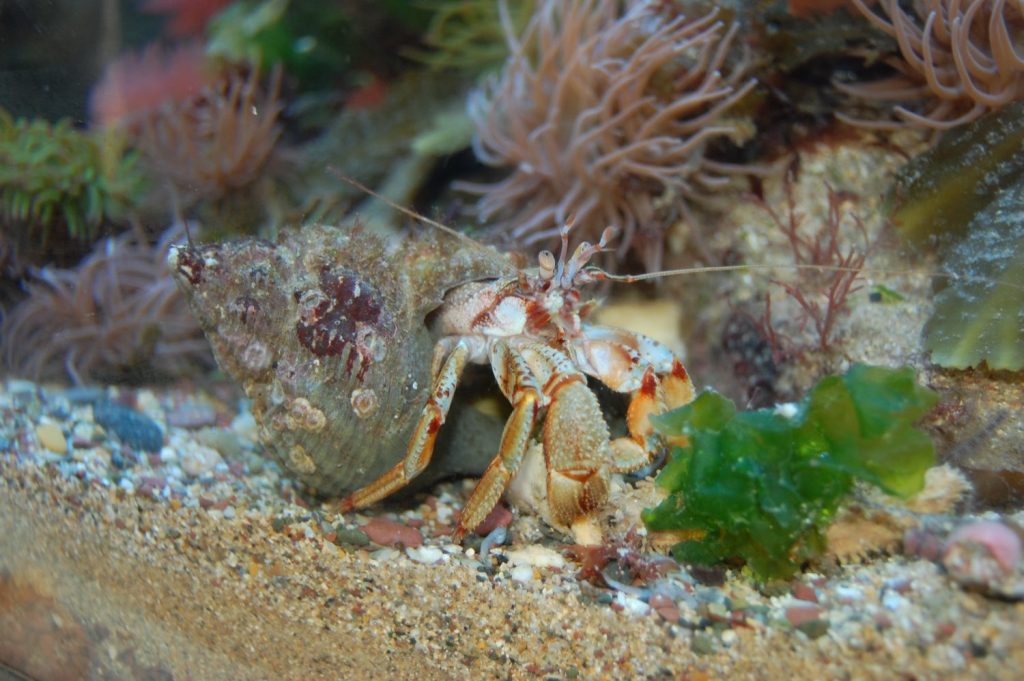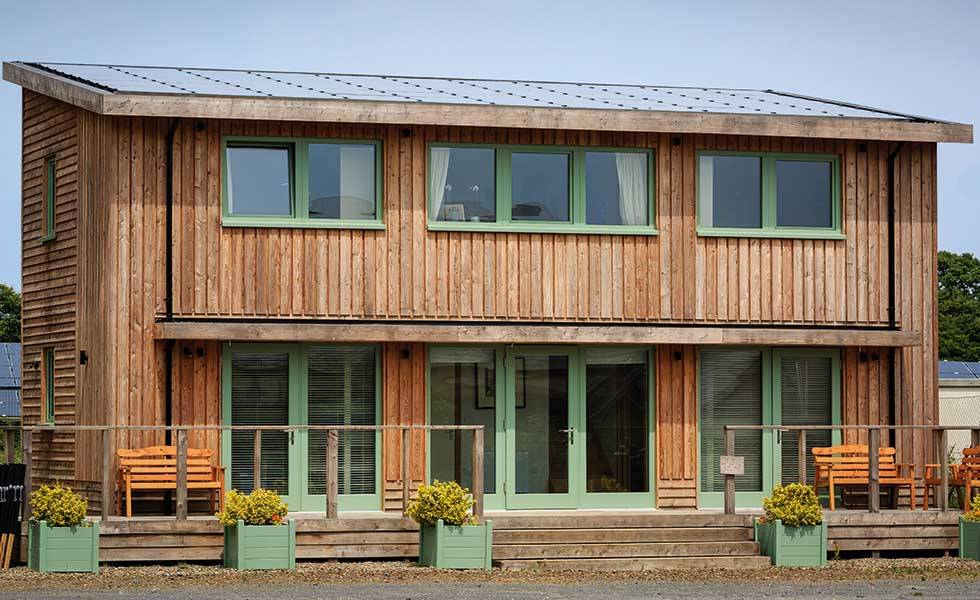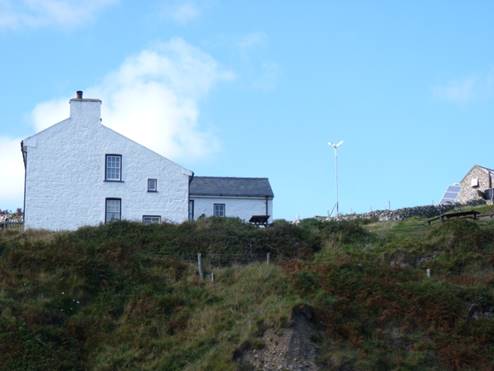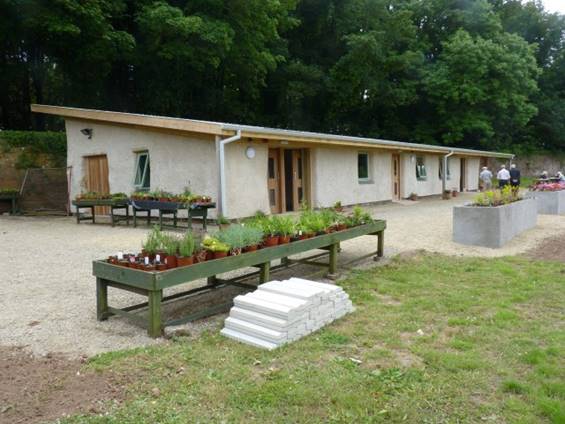Cemaes Head Himalayan Balsam Eradication Project
Tremendous support, a lot of hard work and community participation has made massive inroads into eradicating the invasive plant species Himalayan balsam from a 32-acre site on Cemaes Head in North Pembrokeshire.
Building on previous success at tackling another invasive plant species (Japanese knotweed), St Dogmael’s Community Association received £22,650 of SDF funding over two successive plant growing seasons to remove, prevent the spread and contain the over-whelming growth of Himalayan balsam on the challenging terrain at Cemaes Head.
Techniques employed were site-dependent and included flailing, chainsawing, brush cutting and hand pulling as appropriate. All the hard work and unbreakable determination has successfully reduced the occurrence of the plant from a density of 350 plants per m2 in places to just occasional rogue plants and isolated occurrences.
Each plant can generate anywhere between 600 and 2,500 seeds. It might look pretty but it colonises quickly; displacing native plants and consequently adversely affecting biodiversity, soil stability and water quality.

Approach Taken
- The affected area was mapped to determine the extent and scale of the problem
- The most appropriate techniques and methods to use were then identified and a location specific approach adopted
- Permission for access was sought and agreed with most landowners in the affected area. This was a very important but time-consuming task. The landowners needed to not only understand the problem, the proposed action, future potential for the land and longer term sustainable land management options, but also allow volunteers to have access onto their land and ideally actively participate in the programme of work themselves. In order to support the project, they needed to understand the value and benefits of the project.
- Notices were erected adjacent to the project sites in order to raise awareness of the project, the impact of Himalayan balsam on biodiversity and recommended actions for the public to take if they came across the plant
- Talks, presentation and attendance at meetings were other ways in which the Project Manager shared the knowledge and experience gained
- The outer edges of the affected area were defined to create a ‘fire break’ to prevent any further regrowth and spread
- A local specialist contractor with appropriate machinery was employed to tackle the initial clearance.
This was necessary because the terrain in places is very difficult, with steep slopes and decades of bramble and blackthorn growth.
- Volunteers trained by the project in the use of brush cutters and chainsaws worked on specific areas
- Regular volunteer working parties then followed on after mechanical flailing or brush cutting to pull the remaining plants by hand
- The area was cleared from the outside edge in
- Particular attention was given to clearing the plant next to streams (working downstream), footpaths, bridleways, roads and animal runs as these are identified modes of spread
- Monthly systematic clearing was undertaken from June to October
- Investigation into spraying herbicide proved too costly for the type of land and distribution of Himalayan balsam.
Results
After the first year of the project, surveying the area revealed the density of Himalayan balsam had reduced significantly per m2 of land area covered, from a density of between 249 to 350 plants per m2 in June 2012 to a plant density of between four to 10 per m2 in June 2013. This improved yet further in the second year to leave isolated plants that would require follow up in 2014.
The positive results observed over both years have demonstrated the effectiveness of using a combination of different approaches dependent upon the different habitats, slope of the land, density of Himalayan balsam and amount of bramble, blackthorn and bracken growth.
Skills Training
During the two years of funding, training was given to local and young people in the practical management of invasive species but also in brush cutting (eight people), chainsaw work (two people), and first aid (ten people). In return the trained individuals donated many hours of volunteer time to the project. This aspect of the project delivered unexpected socio-economic benefits in addition to the anticipated environmental benefits. It greatly improved the confidence, well-being and employability of participants and has led to three of the volunteers securing full time occupations using the skills they learned during the project.
Lessons Learned
- Do not be overwhelmed by the extent of the problem but approach the task in a measured methodical way
- Take any opportunities presented to deliver additional benefits such as socio-economic benefits in addition to environmental benefit
- The search for new volunteers is continuous
- The workload to manage the project, deal with the administrative requirements, organise volunteers, provide supervision and first aid cover and meet and negotiate with landowners should not be underestimated. It takes considerable time, effort and dedication
- Local knowledge of the area and land in addition to ordnance survey information is vital
- Awareness raising and education are essential components for a successful project
- You need to be flexible to accommodate the needs and requests of all those involved
- Be resilient to bad weather!
What next?
The long term aim is to completely eradicate the species from the area. This will, however, require further follow up and extension work to include the adoption of conservation land practices by land owners. Follow up is required to clear late germinating seeds as well as rogue and isolated germinating plants that were missed by the project. It is hoped that some landowners will enter into land management agreements with Pembrokeshire Coast National Park Authority. Ultimately the cleared land will either be returned to productive agricultural land or be allowed to regrow into a more natural habitat supporting native species of plants with much improved biodiversity.
Those involved will continue to share best practice and hopefully inspire others to take action.





